#19th c. Czech republic
Text
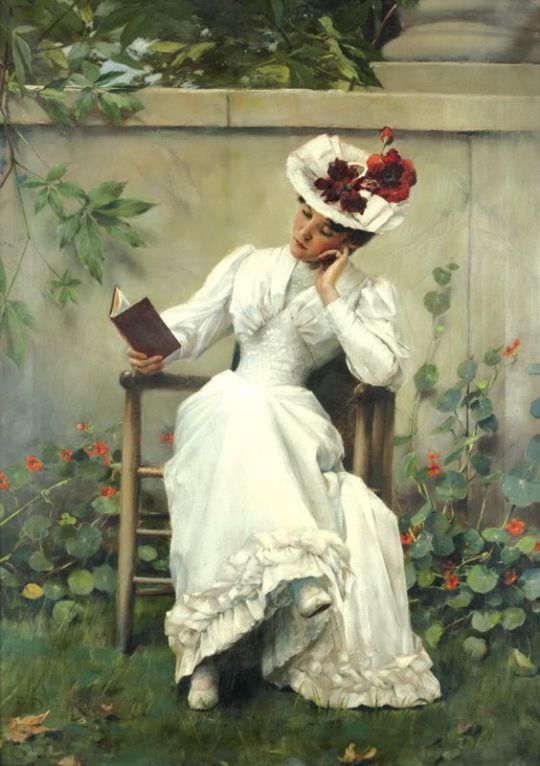

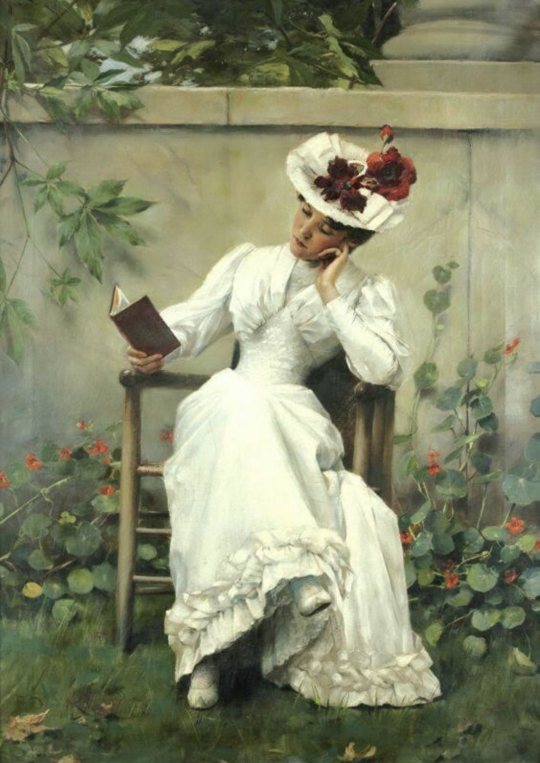
Lady with a book in the garden by František Dvořák, 1892
79 notes
·
View notes
Text


OTD in Music History: Legendary 19th Century composer Antonin Dvorak (1841 - 1904) watches as his Piano Quintet in A major, Op. 5, is performed in Prague in 1872 by what he referred to as "a splendid team of players." It is the first recorded public performance of one of his original works.
The first Bohemian composer to truly achieve worldwide recognition, Dvorak is particularly noted for the strong "nationalist" bent of his music. Bedrich Smetana (1824 - 1884) -- Dvorak’s senior by 17 years -- had already laid the foundations of the Czech nationalist movement in music, and is recognized as “The Father of Czech Music” within the Czech Republic, but after Smetana’s tragic early death from syphilis it fell to Dvorak to develop and extend this legacy in an impressive series of works that have achieved lasting popularity comparable with any great “classical” music that has ever come out of Germany, France, Italy, or Russia.
The secret to Dvorak's success lies first and foremost in his incredible gift for melody, and secondarily in the instantly recognizable and delightfully fresh Czech folk character displayed in much of his best music. Dvorak composed in all major musical genres, and his oeuvre contains works that can justifiably be hailed as true masterpieces in every single major form – a very unusual accomplishment, even among the rarified ranks of “the great composers.”
PICTURED: A c. 1910 real photo postcard, showing the middle-aged Dvorak.
#classical music#composer#Dvorak#Antonin Dvorak#Antonín Dvořák#Romantic-era#romantic period#romantic composer#concerto#Dvorak Concerto#overture#symphony#piano#pianist#violinist#violin#music history#Dvořák#Royal Albert Hall#Royal Philharmonic Society#New York Philharmonic#organist#Symphonies#Symphony#Symphonic poems#Choral#Chamber music#String quintets#Songs#opera
5 notes
·
View notes
Text
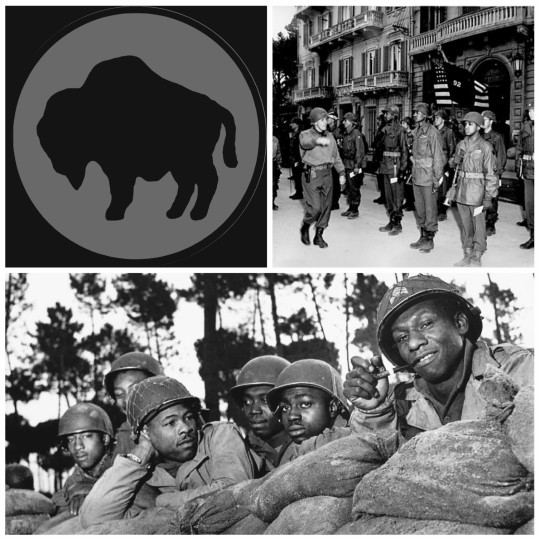
• 92nd Infantry Division
The 92nd Infantry Division was a segregated infantry division of the United States Army that served in both World War I and World War II. the American buffalo was selected as the divisional insignia due to the "Buffalo Soldiers" nickname, given to African American cavalrymen in the 19th century.
The 92nd Division was first constituted on paper October 24th, 1917 in the National Army, over six months after the U.S. entry into World War I. The division was commanded throughout most of its existence by Major General Charles C. Ballou and was composed of the 183rd Infantry Brigade with the 365th and 366th Infantry Regiments, and the 184th Infantry Brigade with the 367th and 368th Infantry Regiments, together with supporting artillery, engineer, medical and signal units attached. The division was organized on October 27th, 1917 at Camp Funston, Kansas. A special "negro zone" was to be built at the east end of Camp Funston, with "separate amusement places and exchanges." A.D. Jellison, a banker of Junction City, Kansas, gave a plot of land for a "community house," to be erected by the black men from the seven states which sent African-American trainees. As was the case with the 93rd Division, parts of the 92nd served under and alongside the French Army after both the main American Expeditionary Force, adhering to the racial policies of President Woodrow Wilson, Secretary of War Newton D. Baker, and southern Democrats who promoted the "separate but equal" doctrine, refused to allow African-American soldiers serve in combat with them. The 92nd Division saw combat in the Meuse-Argonne Offensive during November 1918.
The 92nd Infantry Divison was reactivated on October 15th, 1942, and was sent overseas on September 22nd, 1944. The division was reactivated as an infantry division with the "colored" designation, under the command of Major General Edward Almond, ten months after the American entry into World War II, at Fort Huachuca, Arizona and spent almost two years training in the United States. In late July 1944, the 370th Infantry Regiment was sent overseas to Italy and temporarily attached to the 1st Armored Division. The rest of the division would be sent overseas in September of that year, and the division as a whole would see heavy combat during the remainder of the Italian Campaign. During the 92nd Division's participation in the Italian Front, the Buffalo Soldiers made contact with units of many nationalities: beyond the attached 442nd Regimental Combat Team (442nd RCT), they also had contact with the colonial troops of the British and French colonial empires (Moroccans, Algerians, Senegalese, Indians, Gurkhas, Arab and Jewish Palestinians) as well as with exiled Poles, Greeks and Czechs, anti-fascist Italians and the troops of the Brazilian Expeditionary Force (FEB).
The division's commander, Major General Edward Almond, was for a time highly regarded by General George Marshall, the U.S. Army Chief of Staff, who was a fellow Virginia Military Institute (VMI) graduate. This was a major factor in Almond's promotion to major general and subsequent command of the division, a position he held from its formation in October 1942 until August 1945. He led the division in combat throughout the Italian Campaign of 1944–1945. Almond was chosen by General Marshall to command the division because he believed Almond would excel at what was seen as a difficult assignment. However, Almond performed poorly and went on to blame his poor performance on the fact that the division was made up of largely African American troops. He saw his troops as the source of his failure in combat, and went on to advise the army against ever again using African American soldiers as combat troops.
The 370th Regimental Combat Team, attached to the 1st Armored Division, arrived in Naples, Italy, August 1st, 1944 and entered combat on 24th. It participated in the crossing of the Arno River, the occupation of Lucca and the penetration of the Gothic Line. Enemy resistance was negligible in its area. As Task Force 92, elements of the 92nd attacked on the Ligurian coastal flank toward Massa, October 5th. By the 12th, the slight gains achieved were lost to counterattacks. Elements of the 92nd moved to the Serchio sector, November 3rd, 1944, and advanced in the Serchio River Valley against light resistance, but the attempt to capture Castelnuovo di Garfagnana did not succeed. Patrol activities continued until December 26th, when the enemy attacked, forcing units of the 92nd to withdraw. The attack ended on December 28th. The attacking forces were mainly from the Republic of Salò's Fascist Army, the 4th Italian "Monte Rosa" Alpine Division. After continuing poor combat performance including many instances of unauthorized withdrawals upon meeting the enemy, low morale and malingering, the 92nd Infantry Division was considered of inferior quality both by German and U.S. commands and fit for only defensive roles. Things deteriorated to the point that the division was withdrawn from the lines and rebuilt in early 1945 with the removal of the 366th Infantry Regiment (formed into two engineer general service regiments) and the addition of the 473rd and 442nd Infantry Regiments.Many historians have begun to reevaluate the combat record of the 92nd Infantry Division as contemporaneous reports of its honorable performance have continued to surface. Numerous veterans of the division believed that the reports of poor performance were motivated by racist sentiments present within the senior officer ranks. Even as evidence mounts in support of the division's honorable conduct, some still seek to suppress these facts. The famous and highly decorated Nisei 442nd, made up of Japanese Americans, was withdrawn from the fighting in France to bolster the division's combat effectiveness. The 365th and 371st Infantry Regiments became training and security regiments, respectively, and were stationed in rear areas, although still nominally assigned to the division. On April 1st, the 370th RCT and the attached 442nd Regimental Combat Team (Nisei) attacked the Ligurian coastal sector and drove rapidly north against light opposition from the German 148th Infantry Division, which was supported only by Italian coastal units. The 370th took over the Serchio sector and pursued the retreating enemy from April 18th until the collapse of all enemy forces on April 29th, 1945. Elements of the 92nd Infantry Division entered La Spezia and Genoa on 27th and took over selected towns along the Ligurian coast until the enemy surrendered on May 2nd, 1945 when all German forces in Italy surrendered.
The numbers alone tell an impressive story. Of 12,846 Buffalo Soldiers who saw action, 2,848 were killed, captured or wounded. The Buffalo Soldiers did, in fact, break through the Gothic Line. They reached their objective, captured or helped to capture nearly 24,000 prisoners and received more than 12,000 decorations and citations for their gallantry in combat. The soldiers of the 92nd Infantry Division had proved their worth to America once again through months of bitter combat in the Italian Campaign. Two members of the 92nd Infantry Division were medal of honor recipients John R. Fox, and Vernon J. Baker. The Medal of Honor was not awarded to these recipients until 1997. The 92nd Infantry Division was the only African American infantry division to see combat in Europe during World War II, as part of the U.S. Fifth Army, fighting in the Italian Campaign.
#second world war#world war ii#world war 2#wwii#military history#history#american history#black history matters#black history#black soldiers#black history month#infantry units#u.s infantry#italy in ww2
80 notes
·
View notes
Photo

WASHINGTON DC RESTAURANTS
I only picked one restaurant for each country, but there may be several for that particular ethnic cuisine. I have not gone to all of these, so I can’t stand by how good their food may be. And since restaurants unfortunately close all the time, please Google them before just showing up to see if they’re still operating (and what hours they are open as well.
Afghanistan - Maiwand Grill - 2855, 1764 Columbia Rd NW, Washington, DC 20009
Argentina - Malbec Restaurant - 2433, 1633 17th St NW, Washington, DC 20009
Australia - Oz - 2950 Clarendon Blvd, Arlington, VA 22201
Austria - Leopold's Kafe & Konditorei - 3315 Cady's Alley NW, Washington, DC 20007
Azerbaijan - Kavkaz Kebab - 10902 Boulevard Circle, Owings Mills, MD 21117
Bahamas - 700 Islands Bahamas Cafe & Catering - 1111 3rd St NE, Washington, DC 20002
Bangladesh - Aladdin Restaurant - 5169 Lee Hwy, Arlington, VA 22207
Belgium - Brasserie Beck - 1101 K St NW, Washington, DC 20005
Bolivia - Sibarita Restaurant - 2716, 1939, Washington Blvd, Arlington, VA 22201
Bosnia & Herzegovina - Cosmopolitan Grill - 7770 Richmond Hwy, Alexandria, VA 22306
Brazil - The Grill From Ipanema - 1858 Columbia Rd NW, Washington, DC 20009
Burma - Myanmar Restaurant - 7810-C Lee Hwy, Falls Church, VA 22042
China - Great Wall Szechuan House, 1527 14th St NW, Washington, DC
Colombia - Arepas Pues - 8555 Fenton St, Silver Spring, MD 20910
Cuba - Mi Cuba Cafe - 1424 Park Rd NW, Washington, DC 20010
Czech Republic - Bistro Bohem - 600 Florida Ave NW, Washington, DC 20001
Dominican - Los Hermanos - 1428 Park Rd NW, Washington, DC 20010
Egypt - Fava Pot - 7393 D Lee Highway, Falls Church, VA 22042
El Salvador - La Casita Pupuseria & Market - 8214 Piney Branch Rd, Silver Spring, MD 20910
Eritrea - Keren Restaurant & Coffee Shop - 1780 Florida Ave NW, Washington, DC 20009
Ethiopia - Queen of Sheba Ethiopian - 1503 9th St NW, Washington, DC 20001
France - La Chaumiere - 2813 M St NW, Washington, DC 20007
Georgia - Supra - 1205 11th St NW, Washington, DC 20001
Germany - Biergarten Haus - 1355 H St NE, Washington, DC 20002
Ghana - Appioo African Bar & Grill - 1924 9th St NW, Washington, DC 20001
Great Britain - The Alibi - 237 2nd St NW, Washington, DC 20001
Greece - Kapnos - 2201 14th St NW, Washington, DC 20009
Guatemala - La Bamba Restaurant - 8241 Georgia Ave #201, Silver Spring, MD 20910
Haiti - Gisele Creole Cuisine - 4621, 2407 Price Ave, Silver Spring, MD 20902
Honduras - El Catrachito Restaurant - 2408 University Blvd W, Silver Spring, MD 20902
India - Indigo - 243 K Street Northeast, Washington, DC 20002
Israel - Shouk - 655 K St NW, Washington, DC 20001
Italy - Tortino Restaurant - 1228 11th St NW, Washington, DC 20001
Jamaica - Pimento Grill - 4405 Bowen Rd SE, Washington, DC 20019
Japan - Makoto - 4822 MacArthur Blvd NW, Washington, DC 20007
Kenya - Swahili Village Bar and Grill - 10800 Rhode Island Ave N, Beltsville, MD 20705
Korea - Mandu - 453 K St NW, Washington, DC 20001
Laos - Thip Khao Restaurant - 3462 14th St NW, Washington, DC 20010
Lebanon - Lebanese Taverna - 2641 Connecticut Ave NW, Washington, DC 20008
Malaysia - Penang - 4933 Bethesda Ave, Bethesda, MD 20814
Mexico - Taqueria Habanero - 3710 14th St NW, Washington, DC 20010
Morocco - Marrakech - 1010, 2147 P St NW, Washington, DC 20037
Nepal - Moh Moh Licious - 7414 Georgia Ave #1, Washington, DC 20012
New Zealand - Cassatt's - 4536 Lee Hwy, Arlington, VA 22207
Nicaragua - Rosita Bakery Nica. Gallopinto Llc - 5554 Port Royal Rd, North Springfield, VA 22151
Nigeria - Jodeem African Cuisine - 6000 Greenbelt Rd, Greenbelt, MD 20770
Norway - Calooska Simply Scandinavian - 1309 5th St NE, Washington, DC 20002
Pakistan - Food Corner Kabob & Rotesserie - 2301-H Georgia Ave NW, Washington, DC 20001
Panama - Esencias Panamenas Restaurant - 3322 Georgia Ave NW, Washington, DC 20010
Peru - El Chalan Restaurant - 1924 I St NW, Washington, DC 20006
Philippines - Purple Patch - 3155 Mt Pleasant St NW, Washington, DC 20010
Poland - Polish Market - 431 Maple Ave West, Vienna, VA 22180
Portugal - Tavira - 8401 Connecticut Avenue, Chevy Chase, Maryland 20815
Russia - Mari Vanna DC - 1141 Connecticut Ave NW, Washington, DC 20036
Saudi Arabia - Aldeerah - 262 Cedar Lane SE, Vienna VA
Senegal - Chez Dior - 5124 Baltimore Ave, Hyattsville, MD 20781
Somalia - Kulan - 3821 F South George Mason Dr., Falls Church, VA 22041
Spain - Estadio - 1520 14th St NW, Washington, DC 20005
Sri Lanka - Banana Leaf, 5014 Connecticut Ave NW, Washington DC
Sweden - IKEA College Park - 10100 Baltimore Ave, College Park, MD 20740
Switzerland - Stable DC, 1324 H Street NE, Washington, DC 20002
Thailand - Thai Chef Street Food - 1712 Connecticut Ave NW, Washington, DC 20009
Trinidad & Tobago - DC Crown Bakery - 5409 Georgia Ave NW, Washington DC
Turkey - Ankara - 1320 19th St NW, Washington, DC 20036
Uganda - Little Kampala Bar and Grill - 10110 Washington Blvd N, Laurel, MD 20723
Uzbekistan - Rus Uz - 1000 N Randolph St, Arlington, VA 22201
Venezuela - Arepa Zone - 1121 14th Street NW, Washington DC 20005
Vietnam - Pho Viet - 3513 14th St NW, Washington, DC 20010
Yemen - Marib Restaurant - 6981 Hechinger Dr, Springfield, VA 22151
6 notes
·
View notes
Text
World’s Literature
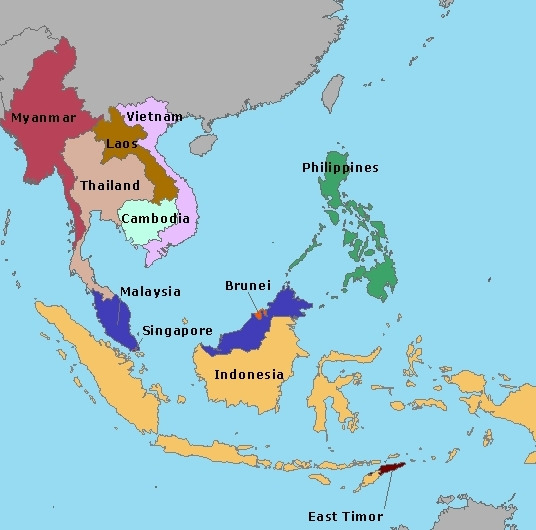
A. Southeast Asia
“All we have to decide is what to do with the time that is given us.” ― J.R.R. Tolkein
Southeast Asia is composed of eleven countries of impressive diversity in religion, culture and history: Brunei, Burma (Myanmar), Cambodia, Timor-Leste, Indonesia, Laos, Malaysia, the Philippines, Singapore, Thailand and Vietnam. Based on my research, the predominant themes of Southeast Asian arts have been religion and national history. In religion the main interest was not so much in actual doctrine but in the life and personality of the Buddha and the personalities and lives of the Hindu gods. In national history the interest was in the legendary heroes of the past, and this theme appeared only after the great empires had fallen and the memories of their glory and power remained. The Buddha image, which went through various stages of development, remained the favorite motif of sculpture and painting. The depiction of scenes from his previous lives in fresco and relief sculpture also had the purpose of teaching the Buddhist ethics to the people, as the Jatakas emphasized certain moral virtues of the Buddha in his previous lives; it also gave an opportunity to the artist to introduce local color by using, as background, scenes from his own contemporary time. The depiction of scenes from the Hindu epics also had the same purpose and gave the same opportunity to the artist. Many figures from the Buddhist and Hindu scriptures, such as gods and goddesses, heroes and princesses, hermits and magicians, demons and dragons, flying horses and winged maidens, became fused with similar native figures, and, gradually, folklore plots became merged in the general religious themes.

B. East Asia
“Only the very weak-minded refuse to be influenced by literature and poetry.” ― Cassandra Clare, Clockwork Angel
East Asia is the eastern region of Asia, which is defined in both geographical and ethno-cultural terms. The modern states of East Asia include China, Hong Kong, Japan, Macau, Mongolia, North Korea, South Korea, and Taiwan. According to my research, some of the themes in East Asia literature are Immortality, Unfaithfulness, Disrespect in the Society, Abused Marriages & Families, Religion, Traditional Practices, Traditional Beliefs and Social Class. Some of the books in East Asia were concerned of the ethical practices that were common in their society. Some of them are about “respect.” Respect is one of the most cherished virtues in the society, and many of the East Asian literatures have always expressed this in different ways, especially the need to respect the elderly and those in power. Another common theme that comes out of the books focuses on the abused marriages. In the two cases, we witness marriage partners engaging in abusive acts against their wives or husbands. There are so many books which possesses such styles and themes in literature.
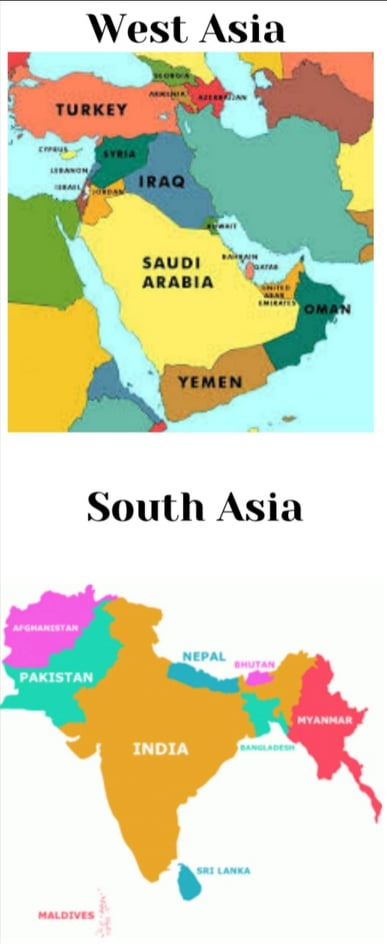
C. South and West Asia
“There is no surer foundation for a beautiful friendship than a mutual taste in literature.” ― P.G. Wodehouse
South Asia or Southern Asia is the southern region of Asia, which is defined in both geographical and ethno-cultural terms. The region consists of Afghanistan, Bangladesh, Bhutan, India, the Maldives, Nepal, Pakistan, and Sri Lanka. The West Asia region comprises of 12 member countries; Bahrain, Iraq, Jordan, Kuwait, Lebanon, Oman, State of Palestine, Qatar, Saudi Arabia, Syrian Arab Republic, United Arab Emirates and Yemen. Based on my research, the peoples of South Asia have had a continuous literature from the first appearance in the Punjab of a branch of the Indo-European-speaking peoples who also settled all of Europe and Iran. In India this branch of Indo-Aryans, as they are usually called, met earlier inhabitants with different languages and no doubt a different culture—possibly a culture akin to that of the Indus Valley civilization, which had a script, and perhaps a literature of its own, of which nothing is known. Certain to have been settled in India were peoples who spoke languages of Dravidian origin, as well as other languages, called Munda, now preserved only by aboriginal tribes, which show affinities with the languages of Southeast Asia. In the Hellenistic period literature and culture flourished in Western Asia. Traditional literary forms such as lists continued to be produced by the native population and were adapted by the new rulers. While there is little evidence for the creation of new narrative literature, which may in part be due to the fragmentary nature of our sources, existing epics, wisdom texts, and folktales were retold, rewritten, and transmitted. Greeks living in Western Asia created historiographical, ethnographical, and geographical works about their surroundings, inspiring in turn the Babylonian priest Berossus to write a reference work on Babylonia in Greek. Much as during the Persian Empire, political instability and changes in power led to a diverse and independent culture of writing. Continuity in all genres, writing systems, and languages remains the most important characteristic of Western Asian literature at least to the beginning of the Christian era.
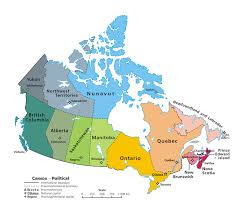
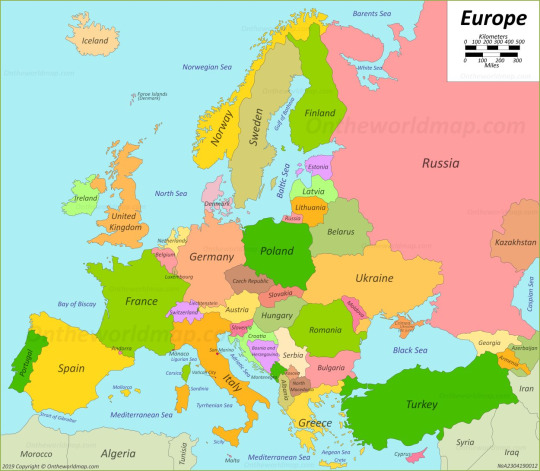
D. Anglo-America and Europe
“Literature is the most agreeable way of ignoring life.” ― Fernando Pessoa, The Book of Disquiet
Anglo-America most often refers to a region in the Americas in which English is a main language and British culture and the British Empire have had significant historical, ethnic, linguistic and cultural impact. Europe is a continent located entirely in the Northern Hemisphere and mostly in the Eastern Hemisphere. It comprises the westernmost part of Eurasia and is bordered by the Arctic Ocean to the north, the Atlantic Ocean to the west, the Mediterranean Sea to the south, and Asia to the east. Based on my research, like other national literatures, American literature was shaped by the history of the country that produced it. For almost a century and a half, America was merely a group of colonies scattered along the eastern seaboard of the North American continent—colonies from which a few hardy souls tentatively ventured westward. After a successful rebellion against the motherland, America became the United States, a nation. By the end of the 19th century this nation extended southward to the Gulf of Mexico, northward to the 49th parallel, and westward to the Pacific. By the end of the 19th century, too, it had taken its place among the powers of the world—its fortunes so interrelated with those of other nations that inevitably it became involved in two world wars and, following these conflicts, with the problems of Europe and East Asia. Meanwhile, the rise of science and industry, as well as changes in ways of thinking and feeling, wrought many modifications in people’s lives. All these factors in the development of the United States molded the literature of the country. Western European literature could be viewed as a parade of movements—Romanticism, Realism, Naturalism, Futurism, Structuralism, and so on indefinitely. European literature refers to the literature of Europe. European literature includes literature in many languages; among the most important of the modern written works are those in English, Spanish, French, Dutch, Polish, German, Italian, Modern Greek, Czech and Russian and works by the Scandinavians and Irish. Important classical and medieval traditions are those in Ancient Greek, Latin, Old Norse , Medieval French and the Italian Tuscan dialect of the renaissance. European literature, also known as Western literature, is the literature written in the context of Western culture in the languages of Europe, as several geographically or historically related languages. Diverse as they are, European literatures, like Indo-European languages, are parts of a common heritage belonging to a race of proud nations which boast the likes of Homer who wrote Iliad and Odyssey, Virgil who wrote the Aeneid, Dante who wrote Divine Comedy, Chaucer who wrote Canterbury Tales. These, and other literary masterpieces form part of what we call as Western Canon.

E. Africa
“Literature is a textually transmitted disease, normally contracted in childhood.” ― Jane Yolen
Africa is the world's second-largest and second-most populous continent, after Asia in both cases. At about 30.3 million km² including adjacent islands, it covers 6% of Earth's total surface area and 20% of its land area. With 1.3 billion people as of 2018, it accounts for about 16% of the world's human population. Based on my research about Africa’s Literature. Afro-Asiatic and African languages together with works written by Africans in European languages. Traditional written literature, which is limited to a smaller geographic area than is oral literature, is most characteristic of those sub-Saharan cultures that have participated in the cultures of the Mediterranean. In particular, there are written literatures in both Hausa and Arabic, created by the scholars of what is now northern Nigeria, and the Somali people have produced a traditional written literature. There are also works written in Geʿez (Ethiopic) and Amharic, two of the languages of Ethiopia, which is the one part of Africa where Christianity has been practiced long enough to be considered traditional. Works written in European languages date primarily from the 20th century onward. The literature of South Africa in English and Afrikaans is also covered in a separate article, South African literature.
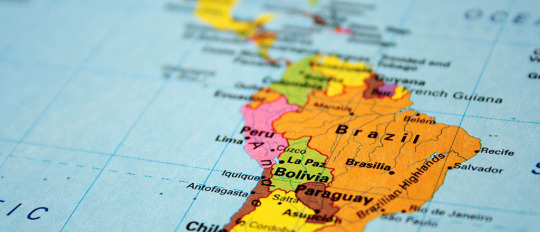
F. Latin America
“Literature is news that stays news.” ― Ezra Pound
Latin America is a group of countries and dependencies in the Western Hemisphere where Romance languages such as Spanish, Portuguese, and French are predominantly spoken. According to my research about Latin America’s Literature. Romanticism, Realism, Naturalism, and Emerging Literary Trends. The Latin American wars of Independence that occurred in the early nineteenth century in Latin America led to literary themes of identity, resistance, and human rights. Latin American literature, the national literatures of the Spanish-speaking countries of the Western Hemisphere. Historically, it also includes the literary expression of the highly developed American Indian civilizations conquered by the Spaniards. Over the years, Latin American literature has developed a rich and complex diversity of themes, forms, creative idioms, and styles. A concise survey of its development is provided here. For a history of literature written in Portuguese in Brazil, see Brazilian literature. Latin American literature refers to written and oral works created by authors in parts of North America, South America, and the Caribbean. Latin American authors usually write in Spanish, Portuguese, English, or a language native to their specific country. Latin American writers working in the United States can be classified as writing Latin American literature too. Latin American literature has a rich history starting in the Pre-Colombian period and working all the way up to modern day. With each period of Latin American history, came a genre that dominated the field. In this lesson, we will look at the main periods of Latin American literature, the genres that fueled those periods, and authors who are well known in Latin American literature.
Source:
Wikipedia, Britannica, Google and Online Library.
Saunar, Rhenz Rhyanne
11 - St. Alypius
7 notes
·
View notes
Link
The modern nation-state informs our modern concept of distinct languages
Most people’s understanding of what a language is has a strong overlap with border of a nation. Our conception of the modern nation-state is part of the reason many people think this. When you go to Germany, people speak this thing called German. From the northern areas near Denmark to the southern areas near Austria, people share a system of speech. Then, when you cross the border into Austria. Something distinct happens with people’s speech. This is a huge oversimplification.
The overlap between language and national borders is relatively new in the grand scheme of things. Languages are extremely fluid things, and the borders between nations cannot match with the borders between languages. Sometimes, speakers can share a country but have a difficult time understanding each other. Other times, speakers that live 50 kilometers apart with an international border between them can understand each other perfectly. Language has no borders and does not care about our national boundaries.
Medieval Europe didn’t have “nations” and therefore “languages”
In history, humans mostly existed in groups of a few dozen, and it is likely that they couldn’t travel far before it became difficult to understand other group’s style of speech. With agriculture settling people down, many people could only understand the people only in the nearby towns. That meant you could understand the people in your village and maybe the nearby villages, but the farther you got, the weirder people spoke. They formed dialect continuums, where Person A can understand Person B, and Persona B can understand Person C, but Person C cannot understand Person A.
Dialect continuums are very typical of earlier agricultural societies. People didn’t travel far, so people only communicated to the people in the nearby villages if they ever left their villages. Nation-states as we know them did not exist, but the language people spoke were no more or less fluid because language has no borders.
Like most things, Louis XIV started this whole thing
The surprising progenitor of a quite few of our modern trends, Louis XIV of France consolidated his nation-state, and he had to therefore consolidate the language spoken, which was less intelligible across his whole realm.
Ever since classical Rome, the descendants of those speaker slowly diverged more and more. In a process similar to biological evolution, isolated populations slowly start to build up speech changes that accumulate over time until groups that once had been speakers of the same language become totally unintelligible. As such, people in the south of Louis’s kingdom spoke something quite distant from his own language. As such, consolidation of legal codes and the erasure of local traditions was part of the process of building a stronger centralized state. Where there once was spoken Occitan or Catalan, French was slowly encouraged and local varieties discouraged. This new nation-state needed to spread the idea that your way of speech is not just another descendant of Vulgar Latin; you are speaking French wrong.
The current organization of our world with nation-states having unique cultures, which include language, is a very new concept in relation to history. Tom Nicholas made a great video on the history of the nation-state. The creation of the modern world with of rights and the public sphere and nations defined by shared features led to this new era of language where languages need to be carefully defined and maintained. Therefore, to create a nation meant to manufacture a standard variety of the language where there were only vaguely related dialects before.
Germany and Italy, late to the nation party, were also late to the language party
French is pretty centralized, and English is pretty centralized. Therefore, most European languages experienced this, right? If we look at the later members of the nation-state party, we’ll see their languages missed a large amount of time to centralize as well. Spain, Portugal, France, Russia, and Britain centralized earlier. Germany and Italy unified in the 19th century. You’ll notice that these languages have huge regional differences. That’s because they’ve only been united for around 5 generations. It takes a long time for languages to erase regionalisms. When these places have no borders, it is easier to understand the idea that language has no borders.
While people may speak German and Italian in everyday life, still a significant portion of the population might speak another intelligible language at home, that intelligibility being debatable depending on the language. A study by ISTAT in 2006 found that only 45.5% of Italians spoke only or mainly in Italian within the family.
This would be like Americans speaking American English at school and speaking Dutch at home. Italians are not a nation of immigrants. People didn’t move to the new nation of Italy; the new nation of Italy moved to the people. This tells us that, whether implicitly or explicitly, the public sphere and the participation in the nation-state encourages the abandonment of traditional local speech varieties.
Eastern European languages that did not have the same nation-building history do not have the same linguistic distinctions
If English and French have been successfully centralized, and Germany and Italian are partially on that path, Slavic languages show us the decentralized languages of Europe.
I speak Bulgarian at home. I don’t have an issue understanding anyone who was born within the borders of the Bulgarian Republic. One day, I was serving customers in my customer service job, and I heard some customers speak something I fully understood. They were discussing what coffee to buy. I butt into their conversation and said in Bulgarian, “Excuse me. Are you guys Bulgarian?” He then responded, “No, brother. Macedonian.”
He ordered fully in Macedonian, and I understood every word. Some vowels sounded different from what I was used to. When he said the number of his table, I did not understand him at all. Other than these exceptions, we communicated perfectly fine. In the same way that New Yorkers can communicate with Alabamans if both avoid some regionalisms, Bulgarians and Macedonians could communicate perfectly.
Because of historical forces that are way too complex to describe in a few paragraphs, the languages of Eastern Europe mostly did not experience the same nation-building projects that Louis XIV, Robert Walpole, or Otto von Bismarck brought to their countries. Eastern European nations switched from sphere of influence to sphere of influence, where each power influenced division rather than conscious assimilation to a greater nation. As such, Serbs can understand Croats, Slovaks can understand Czechs, and Bulgarians can understand Macedonians.
China shows us that languages can diverge for hundreds of years, but can be reunited under one dominant language in recent years
China has a similar situation to western Europe. Most of its languages (or “dialects”) descend from Middle Chinese, which was spoken in classical China. Those language diverged in isolated populations throughout the centuries to the point of being unintelligible. While many people may be within the boundaries of the nation, their speech is not identical because, again, language has no borders. To this day, the linguistic diversity in China is very impressive. However, government initiatives and advantages encourage the whole country to learn Mandarin. Recently, the Chinese version of Tiktok gave 10 minute bans to some creators for using Cantonese during livestreams. While people can still speak their local language on the street and at home, there is a trend that local varieties are disappearing from some systemic disadvantages. Younger generations are speaking Mandarin more and their local varieties less.
Looking at China, we can see how diverging languages can again converge into one of the sibling descendants. The European equivalent would be western Europe to lose their local varieties of Catalan, Occitan, Portuguese, Spanish, etc. in favor of French. This is a unique position because the abandoned and adopted languages are related. Speakers bring the local accent and some vocab preferences because there are some parallels.
1 note
·
View note
Text
Languages of the world
Croatian (hrvatski)
Basic facts
Number of native speakers: 5.6 million
Official language: Bosnia and Herzegovina, Croatia; Burgenland (Austria), Vojvodina (Serbia)
Recognized minority language: Czech Republic, Hungary, Italy, Montenegro, Slovakia
Language of diaspora: Argentina, Australia, Canada, France, Germany, Sweden, New Zealand, United States
Script: Latin, 30 letters
Grammatical cases: 7
Linguistic typology: fusional, SVO
Language family: Indo-European, Balto-Slavic, South Slavic, Western, Serbo-Croatian
Number of dialects: 3 main groups
History
15th century - development as a literary language
19th century - acquisition of its current form
Writing system and pronunciation
These are the letters that make up the alphabet: a b c č ć d dž đ e f g h i j k l lj m n nj o p r s š t u v z ž.
Any syllable (except the last one) can be stressed, although incorrect stress can rarely completely change the meaning of a word.
There are four pitch accents: two falling and two raising, and each of them can be long or short.
Grammar
Nouns have three genders (masculine, feminine, and neuter), two numbers (singular and plural), and seven cases (nominative, genitive, dative, accusative, vocative, locative, and instrumental). They are classified into three declensional types, according to their genitive singular ending.
Adjectives can be definite or indefinite. There are some particularities concerning sound changes within words (assimilation, palatalization, etc.).
Verbs are conjugated for tense, mood (conditional, imperative, indicative, and subjunctive), aspect (perfective and imperfective), person, and number. Many frequent verbs are irregular and have their own endings.
Dialects
Croatian is one of the standard forms of Serbo-Croatian, together with Bosnian, Montenegrin, and Serbian. Serbo-Croatian has three dialect groups, Shtokavian, Chakavian, and Kajkavian, which are named after the most common question word for “what”.
Shtokavian is divided into Old Shtokavian and Neo-Shtokavian. Chakavian includes Buzet, Middle Chakavian, Northern Chakavian, Southern Chakavian, Southeastern Chakavian, and Southwest Istrian. Kajkavian comprises Zagorje-Međimurje, Turopolje-Posavina, Križevci-Podravina, Prigorje, Lower Sutlan, and Goran. Dialects show differences in phonology, morphology, and syntax.
Croatian, like the rest of the standard forms, is based on the Eastern Herzegovinian subdialect of Neo-Shtokavian.
193 notes
·
View notes
Text
Danganronpa Togami Volume 3 Part 9 (Summary)
Thanks to @enoshima-pyon @shockersalvage @jinjojess @hopeymchope

CHAPTER 14- I Don't Want To Be Like Cinderella
1.
The city of a hundred spires. The city with fingers of rain. The hometown of medieval rock. The spells carved on the forehead of golems. The story of the headless templar. The legend of the sword hidden at the pier. The sound of the military boots that once stepped on the cobblestone. Kafka’s lifetime. The aftertaste of the Baroque dream. "Pravda vitezi". My eye of the typhoon. All now at the center of the world. [1-9]
Prague.
I am back.
2.
Shinobu goes back to Prague. There, many UN soldiers are patrolling every corner of the city. Compared to them, the number of citizens who walk outside is very small. Shinobu wants to break through the soldiers to save Byakuya, but without Borges it would be impossible.
There are only a few cars, so she thinks she would draw too much attention with the old Skoda. She decides to leave the car and hide somewhere. It shouldn’t be hard since the city is basically a big maze. She walks on the stone road while paying attention to not being spotted by the soldiers. Shinobu wishes she could go back to the time when she wasn't worrying about her existence collapsing in on itself, when the concept of “I” hadn’t died. Immersed in the sweet memories of the never-ending, a poster flying with the wind lands at her feet reading:
“Emergency Declaration:
1. Byakuya Togami and his accomplices have breached containment at our convoy.
2. Assisting in the arrest of Byakuya Togami and his accomplices will grant bonus awards; if you hide or assist Byakuya Togami, or if you don’t report spotting Byakuya Togami, you will be severely punished.
3. It is forbidden to harm or kill Byakuya Togami and his accomplices.
4. Now that Prague has declared a strict martial law State of Emergency, the specific details are as follows:
a. It is forbidden to go out at night before the situation subsides, no exceptions.
b. Restaurants, bars, cinemas, theaters and other recreational facilities are closed without exception.
c. Those who violate the ban at night and do not immediately identify themselves will be arrested on the spot.
d. Other regulations will be published through posters, broadcasts and other channels.”
-Orvin Elevator, Captain of the World Health Organization Infectious Disease Control and Prevention Unit
Looking around, Shinobu sees that several posters have been hung all over the city.
She wonders why the WHO wants to keep Prague under lock and key. Was it because it was the origin of everything that has happened so far? Or...was it because they know Byakuya is somewhere within the city? She couldn’t say at this point, so she decided to move forward. She arrives at the Strahov Monastery [10], known for containing pieces like the Dodo specimen, located near the Hunger Wall [11]. Shinobu theorizes if she can pass through the courtyard of the Monastery she’ll be able to reach her destination and Byakuya. However, the problem was that it would probably be heavily guarded. Since she lacks an invisibility cloak...or any sneakiness for that matter she feels as though she’s gonna have to win by using her wisdom alone. She starts thinking but realizes her ideas aren’t going to necessarily pan out in her favor. Call the police? Working with WHO. Get a disguise? Shops are closed and the few people out here would make dressing up a waste of time.
Not to mention all potential allies she could have used are gone now. Hiroyuki Ketouin? Dead. Pennyworth and the Needle Force? Not equipped to handle this. The 78th class which came to Prague (Sakura, Celeste and Hifumi)? No word on them after they escaped arrest. It was up to her and her alone.
In the gradual expansion of despair, the observations that tend to be hopeful will bring death.
“It’s so pointless. How utterly despairing.”
However, with the knowledge of war movies and video games at her disposal, Shinobu continues onwards crawling and hiding behind things like flower beds, even thinking of watching out for security cameras even though there didn’t seem to be any around. She notes at that point that losing Borges she also may have lost the grasp of her character at that point. As a consequence of her ‘everything is a battlefield’ mentality, this results in getting herself stuck hiding behind a flower bed and unwilling to pop out unless she finds a good opportunity to do so.
At this time, in the silent city of Prague, the sound of an engine suddenly roared. I decided to believe my instincts and rushed out of the flower bed and quickly passed through the courtyard. I hid in the bush next to me and observed the road outside the courtyard. A jeep turned over the road along the Vltava River and drove towards me. The United Nations soldiers saw the jeep and saluted. judging by that, whoever is in that car should be someone in a high position. The moment the jeep passed by the bush, I saw someone I was very familiar with in the car.
Kazuya.
And…
Suzuhiko.
My mind was in chaos as I was watching the jeep disappear out of my vision. Under the protection of UN soldiers, my brothers are sitting side by side in the city of Prague...? The two of them always had their own differing opinions on me. It was hard to imagine that these two people would shake hands and talk, and it was impossible for Suzuhiko to lose to Kazuya. He must have come to an agreement with Kazuya. That is to say, an agreement for Kazuya to recruit Suzuhiko, he held off his own self-esteem in order to find me and Byakuya Togami. For the object that he once was so hostile and did not hide his desire for challenge, he now shook his tail. While feeling guilty about this and Kazuya, I also learned a truth from it: in order to achieve the goal, I can’t take it now. The means of choice.
The jeep disappeared, and the United Nations soldiers stopped saluting and resumed patrolling. I turned back into the garden, went the other way out, and rushed into the alley. I once again chose to believe in my own consciousness, ran for a while, and finally found the jeep parked in the corner of the alley. Since I returned to Prague, I have only seen the one jeep just now, so I think this is the same one as they were sitting in. There was no one in the car. I was going to hide in the car before they both came back, but the jeep was too narrow and there was no place for me to hide. At this time, my ears caught unsuspecting footsteps. I thanked that Prague’s roads were made from cobblestone, followed the footsteps and found the back of the person I was looking for. I did not hesitate to say "Wait!".
When he turned around, his expression was a little surprised, and it seemed that he was not surprised by me, but that I actually appeared on my own. Suzuhiko concealed that rare expression with a smile, and still made unsuspecting footsteps approaching me.
"No use, Shinobu. Is anyone else gonna come out from playing hide-and-seek, halfway through the hiding like that?" snarks Suzuhiko.
"I don't want to hide any more."
"Well, it looks like it. Then, what's the matter?"
"Let me say something first."
"What?"
"Be my companion."
Translation Notes:
[1] Prague is also called the "City of a Hundred Spires", based on a count by 19th century mathematician Bernard Bolzano; today's count is estimated by the Prague Information Service at 500.
[2] The city with fingers of rain: Prague with Fingers of Rain is a book written by Vítězslav Nezval in 1936, showing off the many sides of life in Prague. Mixing real and surreal, Nezval evokes life's contradictoriness in a series of psalm-like poems of puzzled love and generous humanity.
[3] The hometown of medieval rock refers to the buskers of the city playing a unique genre of music to collect money.
[4] The spells carved on the forehead of golems. The most famous golem narrative involves Judah Loew ben Bezalel, the late 16th century rabbi of Prague, also known as the Maharal, who reportedly "created a golem out of clay from the banks of the Vltava River and brought it to life through rituals and Hebrew incantations to defend the Prague ghetto from anti-Semitic attacks" and pogroms. Depending on the version of the legend, the Jews in Prague were to be either expelled or killed under the rule of Rudolf II, the Holy Roman Emperor.
[5] The story of the headless templar. According to legend, a headless Knight Templar rides a magnificent white horse carrying his own head. He appears on the cobbles of Liliova Street between midnight and 1:00 o’clock. His ghost is doomed to roam the city until someone is brave enough to stab the Knight through the heart with his own sword. Some claim to have seen the ghost – and some have even claimed the horse kicked them.
[6] The legend of the sword hidden at the pier is referring to the legend of Bruncvik’s sword. Bruncvik was an adventurer who came across a magic sword who would kill at just the command of the user. It is a story of tragedy with the sword ending up hidden near Charles Bridge in Prague.
[7] The sound of the military boots that once stepped on the cobblestone is referencing the Nazi occupation of Czechoslovakia.
[8] The aftertaste of the Baroque dream is referring to the type of architecture used commonly throughout Prague's beautifully designed cities.
[9] "Pravda vitezi" meaning “Truth Prevails” is the national motto of the Czech Republic.
[10] Strahov Monastery is a Premonstratensian abbey founded in 1143 by Jindřich Zdík, Bishop John of Prague, and Vladislaus II, Duke of Bohemia. It is located in Strahov, Prague, Czech Republic.
[11] The Hunger Wall is a medieval defensive wall of the Lesser Town of Prague, today's Czech Republic. It was built on Petřín Hill between 1360 and 1362 by order of Charles IV. Marl from quarries on Petřín Hill was used as construction material. The purpose of the construction was to strengthen the fortifications of Prague Castle and Malá Strana against any attack from the west or south. Originally the wall was 4 to 4.5 metres high and 1.8 metres wide and was equipped with battlements and (probably) eight bastions.
To Be Continued
https://drmedicsgamesurgery.tumblr.com/GameSurgeryDRTranslations
#Danganronpa#danganronpa togami#Danganronpa: Togami#Danganronpa:Togami#DRT#DRT3#DRT3 Summary#Part 9#togami
13 notes
·
View notes
Photo


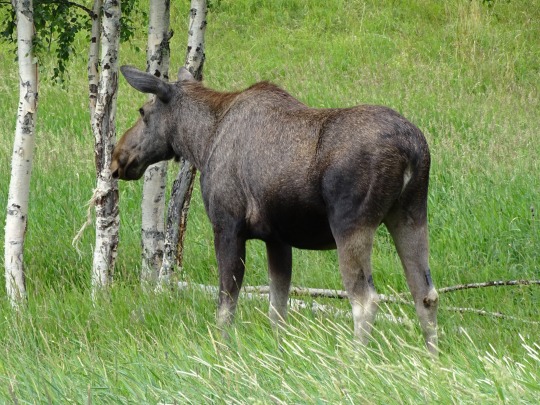
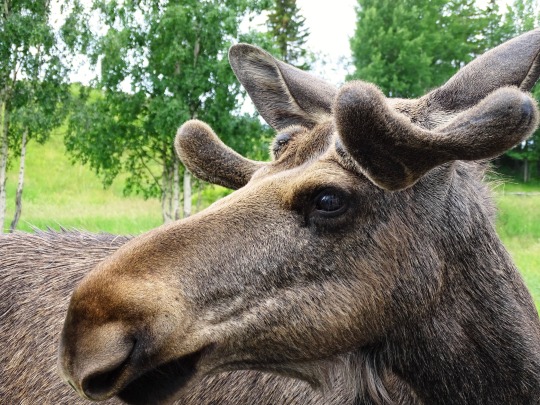
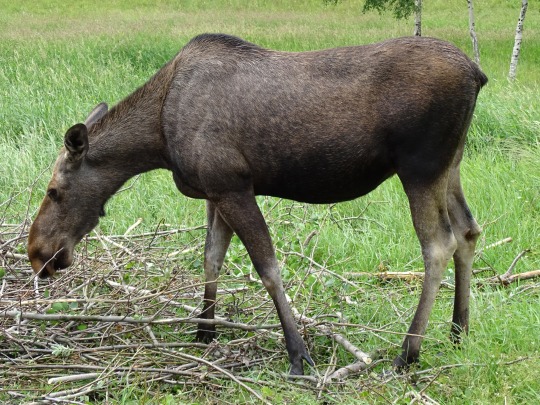

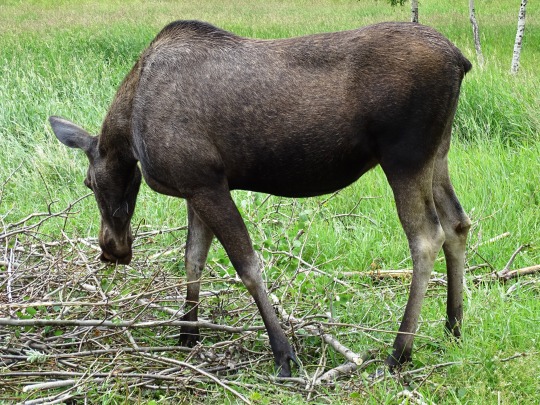



Moose Garden, Sweden (No. 5)
In Europe, moose are currently found in large numbers throughout Norway, Sweden, Finland, Latvia, Estonia, Poland, with more modest numbers in the southern Czech Republic, Belarus and northern Ukraine. They are also widespread through Russia on up through the borders with Finland south towards the border with Estonia, Belarus and Ukraine and stretching far away eastwards to the Yenisei River in Siberia. The European moose was native to most temperate areas with suitable habitat on the continent and even Scotland from the end of the last Ice Age, as Europe had a mix of temperate boreal and deciduous forest. Up through Classical times, the species was certainly thriving in both Gaul and Magna Germania, as it appears in military and hunting accounts of the age. However, as the Roman era faded into medieval times, the beast slowly disappeared: soon after the reign of Charlemagne, the moose disappeared from France, where its range extended from Normandy in the north to the Pyrenees in the south. Farther east, it survived in Alsace and the Netherlands until the 9th century as the marshlands in the latter were drained and the forests were cleared away for feudal lands in the former. It was gone from Switzerland by the year 1000, from the western Czech Republic by 1300, from Mecklenburg in Germany by c. 1600, and from Hungary and the Caucasus since the 18th and 19th century, respectively.
Source: Wikipedia
#Moose Garden#Orrviken#Jämtland County#birch#meadow#flora#fauna#moose#animal#Alces alces#fence#original photography#summer 2020#travel#vacation#tourist attraction#Sweden#Sverige#Scandinavia#grass#eating#Northern Europe#architecture#farm building
0 notes
Text
RMJM Architects News, Architecture Office
RMJM Architects, Scottish Design Studio, Photos, UK Architecture Office Projects
RMJM Architects Office
Contemporary Architecture Practice News: key Buildings around the World
post updated 4 August 2021
RMJM Architects News
RMJM Architects News
RMJM RED Appointed as Lead Design Architects for the Deli Mixed-Use Development
RMJM RED have been appointed as the lead design architects for the Deli Mixed-use Development in Ningbo, China. RMJM RED were invited by the client to enter the competition for the project, which was chosen amongst other projects by other high profile international firms.
A City within a City: Terracing Oasis
The two office towers and the podium commercial pavilions form an integrated complex containing an open central square, reflecting the sense of openness within the three-dimensional structure of a city that keeps evolving.
The connections to the urban environment and the project’s various functions create a miniature city within a city. A shared landscape platform intertwines with the various built elements on each podium level, softening the urban ambience by reducing noise and introducing terracing greenery where urban meets nature and the city bustle collides with the forest tranquillity. This urban oasis will flourish in harmony with the adjacent central park, moving from season to season with the temperate local climate and allowing for the creation of a visual connection between the central green axis and these landscape platforms.
Prime Position
The Deli Mixed-Use development is located in the heart of Ningbo’s Eastern New Town, a vibrant and modern district in the historical and cultural city. The site is in a prime position in the Central Business District adjacent to the Grand Central Park, in good company amongst other high-profile projects by internationally renowned architects. The area, set amongst a unique waterway network and lush green surroundings, is, at once, modern and natural. Adjacent to Ningdong Road, the main urban road in the north, it faces the Ningbo Global Shipping Plaza. Chengyuan Road is to the east, Jiahui Street to the south, and Changle Road to the west. It is well-connected to all modes of transportation.
“The project has been designed to represent the spirit of the Deli Group and to reflect their vision of a distinctive commercial destination that is based on sensible first principles. We worked closely with the client to explore a variety of scenarios and the final scheme is testament to that shared exploration.” – Brenda Ye Executive Director | RMJM RED
A Balanced Unity
The tower placement takes a staggered approach with the two towers situated on opposing corners to ensure each tower has access to open views, daylight and ventilation. The two human-scaled commercial pavilions are placed in the opposite corners. These four building elements are intertwined to create an interactive development within a tranquil setting.
A central plaza brings people together for business and leisure. The retail and office functions can operate independently whilst the central space serves as a focal point, unifying the various functions into an integrated mixed-use complex.
A Garden Atmosphere
A central plaza extends to the natural landscape of central park on the east, making it an open landscape park permeating west to east. This activated axis, rich and interactive with the terracing landscape and is framed by retail functions and the main entrance to the main tower. The podium form is expressed with an organic language that makes for a natural street-level atmosphere as if one were visiting a garden. Three sculpted podium levels allow the formal urban grid to transition into a lush central oasis that echoes the central park to the east. The greenery continues upwards through the landscape platforms at the podium levels to the sky garden of the towers, offering the users a fleeting moment of reflection and reconnection with nature from their otherwise busy city lives.
“The context is very much urban, but there is a strong underlying fabric of nature woven into that. The challenge was to strike a balance between the rational and the poetic. The commercial demands called for considerable rigour, but the success of the project lies in the team’s ability to imbue the project with natural characteristics.” – Chee Ko Design Director | RMJM RED
Sky Garden Workspace
The tower volumes are 150m and 100m tall and are composed to work harmoniously with the existing skyline of the financial and business district. The main tower is located on the northeast side of the site, adjacent to the Ningdong Road and facing the central park to the east. It is designated for headquarters-type tenancies, with the office function beginning on the 6th floor and the retail facilities on the lower levels.
The tower has indoor garden office space on the 6-10th floor that overlooks the central park to the southeast. The 11th, 21st, and 26th floors consist of outdoor terraces, allowing for an extension of the green landscape from the ground to the low, middle and high levels of the tower. Occupants have access to a variety of spaces they can use to enhance their working day: they can enjoy views of the city from different heights and perspectives whilst the city’s population can have a greener built environment. The secondary tower is located southwest of the site, adjacent to Changle Road and Jiahui Road. Its office facilities start on the 4th floor. There is a double-height outdoor terrace on the 19th and 20th floors that responds to the central park. The interior space can be used as a special tenancy with a unique office and communication space.
Spirit of Humility
The design of tower facades, similar to the overall design, follows a sensible and elegant rhythm and reflects a spirit of reliability and humility. The facade texture of the main building and the secondary building is slightly different. The office tower is principally composed of simple and vertically continuous elements while the second building is clad in staggered and dynamic vertical features, creating a coordinated but differentiated contemporary expression. The podium façade highlights its flowing volumes with warm-toned accented glass that adds to the vibrant street-level atmosphere.
Ningbo is a growing metropolis where rural graduates and young families will settle to join the growing urban economy. Such green spaces in the heart of the city will offer them a connection with home.
8 Jun 2021
Sanko Headquarters in Istanbul, Western Turkey
picture from architecture office
Sanko Headquarters Istanbul
RMJM Milano have won a competition to design the new Sanko Headquarters, one of Turkey’s oldest group of companies. Their landmark design was selected among other prestigious firms for its sustainable and innovative features.
12 Jan 2021
Mixed-Use Gdynia Development, Gdynia, Poland
Architects: RMJM Prague
picture from architects firm
Gdynia Development
The team at RMJM Prague recently placed fourth in Polish competition for a mixed-use development in the city of Gdynia. The competition was close and they were thrilled to have been considered alongside a number of prestigious firms.
24 Mar 2020
RMJM Introduces Database for Quarantined Architects
Much of the global news is currently being dominated by stories of Covid-19 and the impact it is having on the people as they are quarantined and self-isolated.
RMJM Database for Quarantined Architects
30 Jan 2020
Sheremetyevo International Airport, Moscow, Russia
Architects: RMJM Serbia
Terminal C in Sheremetyevo International Airport, Moscow
Russian Avant-garde techniques are visible throughout the terminal, both in the interior and exterior designs.
16 Aug 2019
Fifth Building, MSIC technological park, Ostrava, Czech Republic
Design: RMJM Prague
Fifth Building Ostrava
29 May 2019
Practice Portfolio of services grows stronger with RMJM UDG
RMJM, the leading architectural network with 30 studios worldwide, has announced the launch of RMJM Urban Design Group (UDG), a new sector-specific team highly specialised in urban design and masterplanning:
RMJM Urban Design Group (UDG)
RMJM Architects News 2012-18
14 Mar 2018
Appointment to Design Ningbo Agricultural Bank of China
picture from architects
Ningbo Agricultural Bank of China by RMJM RED
RMJM RED appointed by Agricultural Bank of China as the Architectural Consultant of their Ningbo Branch. The design proposal won an international design competition that included Danish architects office Schmidt Hammer Lassen.
30 Aug 2016
Iran Historical Car Museum, near Tehran, Iran
Design: RMJM Arta-Tehran Architects
This architecture office has been appointed by the Cultural Institute of Bonyad Museum as architectural consultant for the Iran Historical Car Museum:
Iran Historical Car Museum in Tehran
27 Oct 2012
RMJM puts UK firms in receivership
The practice has called in the receivers on UK operations in a bid to avoid or delay paying millions it owes to creditors.
Edinburgh-based RMJM, which controversially hired disgraced banker Fred Goodwin as a consultant, has “sold” the assets to a new firm, and says that the move has saved 120 jobs.
Peter Morrison:
photo : Dave Johnstone
The new company, RMJM Architecture, is majority-owned by Sir Fraser Morrison and his family.
RMJM : Practice Information
Recent Designs by RMJM
11 Jan 2012
Atasehir Tower, Istanbul, Turkey
picture from architects
Atasehir Tower Istanbul
RMJM Dubai studio receives planning approval for one of the tallest towers in Europe, located in the Atasehir district of Istanbul. The design for the mixed-use building, including super-high-rise apartments, will consist of a tower nearly 300 metres tall comparable with the height of London’s Shard.
12 Dec 2011
DHA City, Karachi, Pakistan
image from architects practice
Pakistan Masterplan
The Dubai studio has unveiled an ambitious masterplan for a new city near Karachi in Pakistan. In partnership with Doxiadis and Osmani Associates along with Professor Spiro Pollalis as chief planner, this architects office won a design competition in August 2010 to undertake the master planning study of DHA City in Karachi on an 11,640 acre rural site.
7 Nov 2011
Merthyr Learning Quarter, southeast Wales, UK
2011-
image from architects office
Merthyr Learning Quarter< design
Planning permission has been granted for the Merthyr Learning Quarter Project (MLQ), which is being designed by the London studio. 31 Oct 2011
31 Oct 2011
Domodedovo Airport, Moscow, Russia
picture from architects firm
Domodedovo Airport
This architects office awarded Segment 3 of Domodedovo Airport’s United Terminal. The RMJM European studio has been awarded the contract to design Segment 3 of the United Terminal of Domodedovo Airport in Moscow. It will be designed by this architects office in Edinburgh and Moscow and will increase the airports current capacity by 16.5 million passengers per year, with construction expected to be complete in 2017.
7 Oct 2011
St Bride’s Kirk – refurbishment, East Kilbride, South Lanarkshire, Scotland
image from Paul Stallan
St Bride’s Kirk : building refurbishment
Project by Paul Stallan _ Studio, RMJM
22 Aug 2011
Newcastle Sixth Form College, England
image from architect
Newcastle Sixth Form College
4 Aug 2011
Irving Convention Center, Texas, USA
Design: RMJM Hillier Architects
image from architect
Irving Convention Center
St Joseph’s Primary School, South Lanarkshire, Scotland
photo © Keith Hunter
St.Joseph’s Primary School is one of a group of schools by this UK architects office, constructed by British contractors Kier.
Napier Sighthill Campus, Edinburgh, Scotland
photograph from architects
Napier Sighthill Campus
Architects Office News in 2010
9 Sep 2010
Commonwealth Games Village, Glasgow, Scotland – Approval news
picture from architects office
Commonwealth Games Athletes Village
7 Jun 2010
Capital Gate, Abu Dhabi, UAE – most leaning tower in the world
image from architecture office
Capital Gate Abu Dhabi
21 Jun 2010
Park Circus, Glasgow, Scotland, UK
image from architects office
Park Circus
Key Buildings by RMJM
Featured Buildings by RMJM Architects
Scottish Parliament Building, Scotland
building image © Adrian Welch
Okhta Tower, Russia
image courtesy of architecture office
Palm Island Dubai, UAE
picture courtesy of architects office
Falkirk Wheel, Scotland
building photo from SSUK
RMJM Building News 2009
Public Academy Suzhou Campus, China
image courtesy of architects office
Ayr Campus Building, Scotland
image courtesy of architects office
Louisiana Cancer Research Centre, USA
image courtesy of architectural practice
London Array Wind Farm Substation, UK
image courtesy of architectural practice
RMJM Hillier : North American Offices of Global Firm to Use RMJM Name
Building News 2008
Beijing Convention Centre, China
image courtesy of architectural practice
Dubai Convention Centre, UAE
image courtesy of architecture practice
Ekaterinburg Tower, Russia
image courtesy of architectural practice
St Patrick’s College Dublin, Ireland
image courtesy of architectural practice
Kolkata Convention Centre, India
image from architects
Mont Orchid Riverlet, Hong Kong
image from architects
Capital Centre Hotel, UAE
image from architects
City Palace Tower, Moscow, Russia
image from architects
Madinat Al Soor Dubai, UAE
image from architects
Chinese University of Hong Kong
image from architects
Jewel and Esk Valley College, Edinburgh, Scotland, UK
image from architects
Shenzhen University Town Library, China
image from architects
Sheffield University, England, UK
image from architects
University Campus Suffolk, England
image from architecture firm
Forthside development, Edinburgh, Scotland
image from architects
Princes Dock Tower, Liverpool, England, UK
image from architects firm
Doncaster Racehorse Facility, England
Doncaster building
Kolkata Airport, India
image from architects
Kolkata Airport Building
More RMJM projects online soon
RMJM Hillier
RMJM Hillier Architects : Announcement
Moscow Skyscraper – Moscow City Palace Tower, Russia
46 storey tower; initial proposal for 118 storeys – Europe’s tallest tower
located close to Foster & Partners’ ‘tallest tower in Europe’ proposal
This British design firm win Gazprom’s new headquarters in St Petersburg, Russia
image from architects
Key Architecture Projects by this firm
Newcastle College
Homes for the Future, Glasgow
Tron Theatre, Glasgow
Glasgow Harbour – various buildings
David Hume Tower, Edinburgh (Robert Matthew)
Scottish Public Pensions Agency, Galashiels
Al Gurg Tower, UAE
More projects by by this UK architects practice online soon
Location: Edinburgh, Scotland
RMJM Architects Practice Information
This architecture office was founded in 1956 by British architects Robert Matthew and Stirrat Johnson-Marshall
The architects office is headquartered in Edinburgh, Scotland, United Kingdom.
The most well-known Scottish building by this architects office has to be the Scottish Parliament in collaboration with EMBT Architects
Croythorn House, Edinburgh
Scottish Architecture
Buildings / photos for the RMJM Architects page welcome
Website: www.rmjm.com
The post RMJM Architects News, Architecture Office appeared first on e-architect.
0 notes
Photo

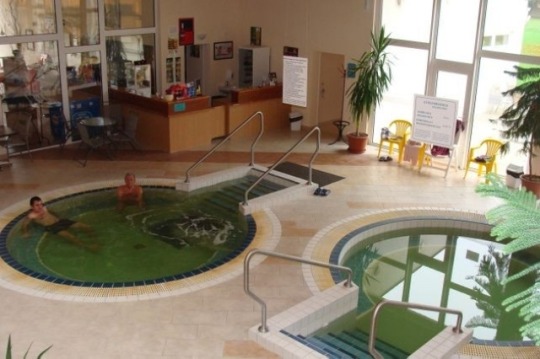

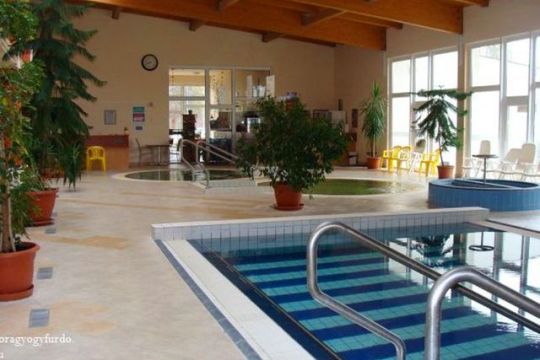
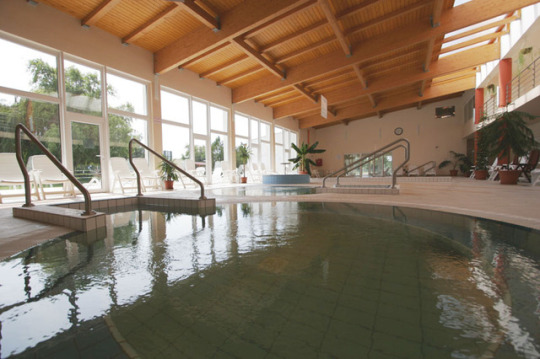


THE „MIRACLE OF KAPUVÁR” The expression above was used by a journalist from Graz, who visited the Angiological Department of Sándor Lumniczer Hospital and Clinic of Kapuvár, to describe the special and unique medical treatment system (carbonic acid gas bath) considered as HUNGARICUM applied to cure patients suffering from peripheral angiopathy. It is well-known that approx 3-400 thousand patients in Hungary, 60-70 million in Europe and ten millions on the other continents are affected by this disease. It can be stated that it is a pandemic disease similarly to tuberculosis or Black Death of the old times.The beneficial effects of this special bath method were already known in the Roman era. Later, in the 16th century Paracelsus took advantage of the method, mainly for curing burns and ulcers. Since the 19th century the utilization of the Transylvanian mofettes by the traditional medicine has been mentioned in several documents. In Europe well-known carbon dioxide baths can be found in Germany, France, the Czech Republic, Slovakia, Austria and Transylvania (Romania). In Hungary at first Dr. Pál Schwartz applied artificial carbon dioxide bath (in bath-tub) in Mihályi in 1940’s. Later he continued the treatments in the hospital of Kapuvár. The carbon dioxide for the treatments was obtained from gas-fields that were exploited in the 1930’s and ‘40’s by deep-boring. Schwartz applied the bath successfully for the treatment of chronic joint diseases. Carbon dioxide is present in our lives: it regulates the respiration and the circulation. Experience proves that it absorbs through the skin and expends the blood vessels locally under the skin. The cardiac functions improve; the superfluous gas leaves through the lung. This determines the indication of the treatment, since it is recommended to patients whose respiratory surface has decreased or the cardiac functions have declined and can not be burdened. The thermal water of 67 °C of Kapuvár, which is qualified as medicinal water, is – according to experts – top quality water in Hungary, the most acknowledged after Hévíz. The water of the thermal well is alkaline hydrogen carbonate and chloride thermal water containing dissolved salt in large volumes (14337 mg/l), and due to its content of iodide and sulphide ion, it can be classified as iodiferous and sulphide thermal water. Besides, the water contains significant concentration of bromide, fluoride, lithium and metasilicic acid.
7 notes
·
View notes
Text
a . age : 27 Y_Y
b . birthplace : Be’er Ya’akov, Israel.
c . current time : 09:03 PM when I started this, 09:34 when posting.
d . drink you had last : coke.
e . easiest person(s) to talk to : myyyyy spouse obviously. But then my mom, a couple of IRL friends, and @ghostsandwhiskey my internet husband.
f . favorite song(s) : it will forever be an unsettled debate between The Threshingfloor by Wovenhand and Praying Arm Lane by Sixteen Horsepower.
h . horror yes or horror no : yes but I am apparently on this with everybody else when I say good horror has become increasingly hard to find. Basically Hitchcock was the last director to truly chill me.
i . in love ? : I mean I better be in love with the dude I’m married to.
j . jealous of people : I regret to admit that yes I am quite often.
k . killed someone : I mean any relation between myself and the mysterious disappearances of Ariel’s exes is completely coincidential
l . love at first sight or should i walk by again ? : ew I am not a romantic like at all.
m. middle name(s) : none!
n . number of siblings : one brother, four years younger.
o . one wish : wow are everybody around here the same person? To create a piece of art that deeply touches or inspires someone.
q . question you’re always asked : where’d I get my English / where in the US am I from / the latter is not so much a question as it is a statement: I’m lying when I say I’m not Russian / don’t speak Russian.
r . reason(s) to smile : this video of my bird giving my spouse some kisses.
s . song you sang last : Gravy Boat from Bob’s Burgers as covered by The National.
t . top 3 fictional characters : Harry Starks(!!!!!!!), Leonard Shelby, Narrator/Jack.
u . underwear & color : teal.
v . vacation : really hoping to go back to the Czech Republic this summer. Beautiful country, amazing food, cheap as all fuck.
w . when’s your birthday : March 19th.
x . x - rays : lower back.
y . your favorite food : Thai curry and/or a variety of Mexican foods.
z . zodiac sign : Pisces. That’s right, I’m creative and emotionally unstable.
tagged by: @memoryserved <3
tags: @ghostsandwhiskey @inrovina @necrctic @splatteredfingers
#ooc.#me: i feel shitty i am not going to move from this couch tonight#me 2 mins after u tag me in this
3 notes
·
View notes
Text

OTD in Music History: Norwegian composer Edvard Grieg (1843 - 1907) – who was actually the first cousin, twice-removed, of famed Canadian pianist Glenn Gould (1932 - 1982) – dies in Norway.
One of the most popular and beloved "classical" composers of the 19th Century, Grieg's skillful use of Norwegian folk music in his compositions for the concert stage did much to help his country cultivate its national cultural identity, just as Jean Sibelius (1865 - 1957) did for Finland and Bedrich Smetana (1824 - 1884) did for the Czech Republic. Grieg's spirited rhythms often have folk song associations, and his harmonies -- although firmly rooted within the mainstream late-Romantic idiom -- were considered to be both novel and piquant in his own time.
Between 1867 and 1901, Grieg wrote ten collections of "Lyric Pieces" ("Lyriske Stykker") for piano; many of these short and beautiful little "character pieces" are still performed today, especially by students. Although he was essentially a miniaturist, Grieg did complete several major works in larger forms, including the famous Piano Concerto (1869), a String Quartet (1878), and three Sonatas for Violin and Piano (1865 - 1887). His "Peer Gynt Suite" (1876) and "Holberg Suite" (1884) for orchestra also remain perennial audience favorites.
PICTURED: A c. 1910 real photo postcard showing the elderly “Dr. Ed. Grieg” relaxing in his backyard during the Summer of 1907, in the final weeks of his life.

0 notes
Photo

October 19th, 8.44, Drizzle 9 °C #thursday #morningrun #greentea #prague🇨🇿 #czechia (at Prague, Czech Republic)
1 note
·
View note
Text
prague | 24 hours in holešovice

last month we were in prague for a concert and ended up staying in holešovice, simply because the cheapest private accommodation available was there. and not only in holešovice (which is a large swath of prague 7 that sort of encircles prague's bubny train station), but east holešovice. i go there whenever i visit the DOX museum, but industrial east holešovice does not seem to be a favorite area of praguers. i asked a couple that i knew, "hey! where do you like to go in east holešovice?"
"um........"
"i mean, pražská tržnice is there. and so is cafe jedna. right?"
"......can't you just go to letná?"
the letná side of holešovice (west holešovice), enjoying a much less isolated location west of bubny station is far more up-and-coming than the hard-to-reach east side. i received loads of recommendations there. but poor eastern holešovice....
it doesn't quite have the savoir-faire of its western counterpart, but aside from a mandatory visit to the fantastic DOX, there is still goodness to be found in eastern holešovice. brilliantly accessible thanks to the nádraží holešovice (train station), within a few blocks opens onto lovely ortenovo náměstí which has a park of european-capital caliber, enjoyable for both adults and kiddos with a great playground. the legendary sir toby's hostel is also in this neighborhood, and has a great bar and terrace area, popular with expats and travelers for its programs in english.
south of here if you want to stroll down komunardů (busy street running north-south), you can actually find a lot while feeling like you’re in a smaller czech town or neighborhood and not in the busy capital. phill’s cafe branches right around the corner of přístavní seem alive and well, and a little further down you'll find bistro lovely day, where we had brunch on their nice terrace the next morning. the perfect kind of fuel you need before getting on a train, and at a nice price point, to boot (highly recommended - i mean, look at this spread; it’s killer).
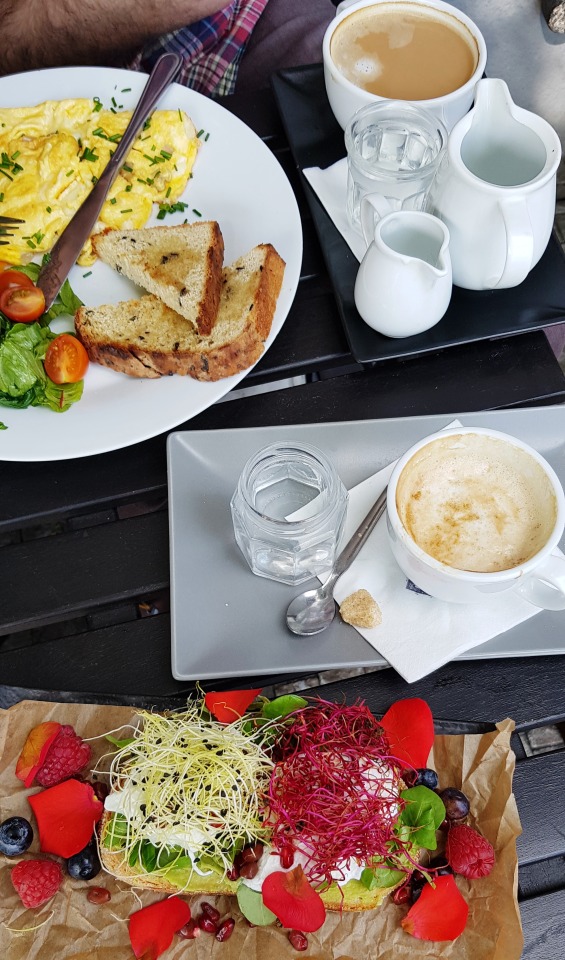

but as we arrived the day before, we needed some sort of quick and cheap refreshment. that led us down to the strange, almost military complex of barracks that make up prague's tržnice (market). as well as holding events (like the coffee festival we went to years ago), you can also find some pretty decent vietnamese food.
after a bowl of bun chay at tràng an on their covered terrace, i was feeling far more refreshed and ready to get on with the beautiful afternoon. it’s funny that even sitting outside at a vietnamese restaurant, you are facing a world war one memorial. history is everywhere in prague, no matter how unlikely the location.
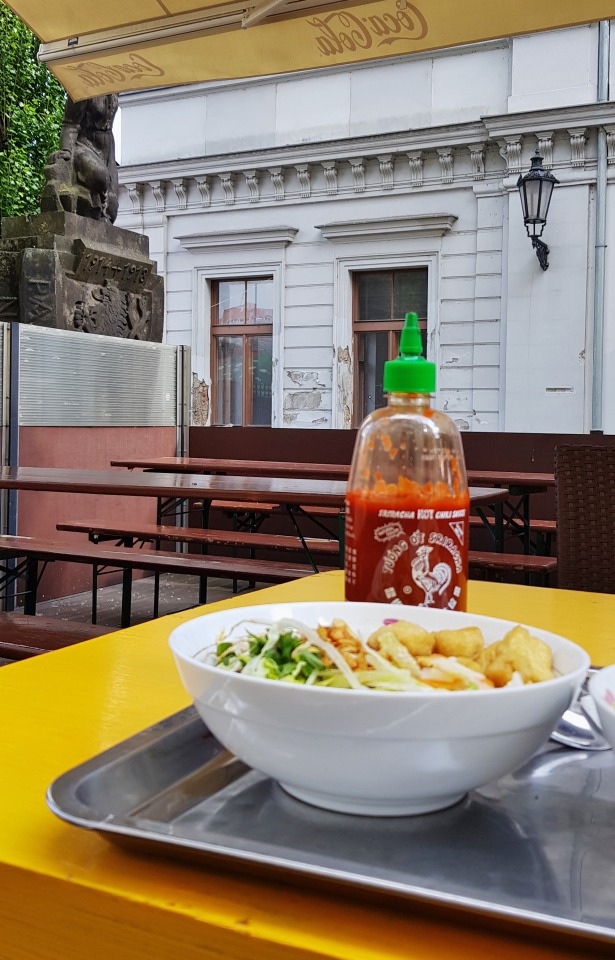
this past may had been quite cold and rainy -- very unlike may in central europe, but this weekend in the middle of the month we found beautiful temperatures around 20°C which simply demanded a park visit. we strolled around bubny to northern letná to the eastern-most entrance of stromovka park. we have a stromovka park (popular name) in budejovice as well, but this stromovka -- it is the park of prague. although there are plenty, none were as stunning as this park. we came to a vista looking down northwards to all that the park held -- man-made ponds, picnic and sport areas galore, ice cream trucks, brightly colored tropical flowers -- this was simply a pražký ráj (prague paradise), we dubbed it.
wandering this massive park was the perfect fair weather prague activity to do with pejsek in tow! and gosh, is there really anywhere else in prague you would rather be on a fantastic spring day such as that one?



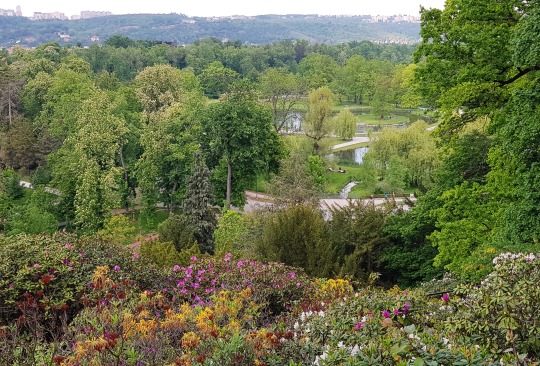
after what seemed like hours, we crawled out in search of sustenance. although we met many tempting little cafes and bistros lining the letna outer boundaries of the park, we finally settled on a recommendation of a friend, salt n pepa cafe. choosing a non-ethnic restaurant in the czech republic in any given area is typically not the easiest task for us. as neither of us are going to order a meat dish, we need to make sure that the restaurant can offer some solid fare for all involved. although i probably won't go out of my way to come back, salt n pepa kitchen offered inventive fare that will please the meat-lovers as well as the veggie folks. i had a roast aubergine, drizzled with a tahini sauce served with a tabouleh salad, which made for a satisfying light dinner.
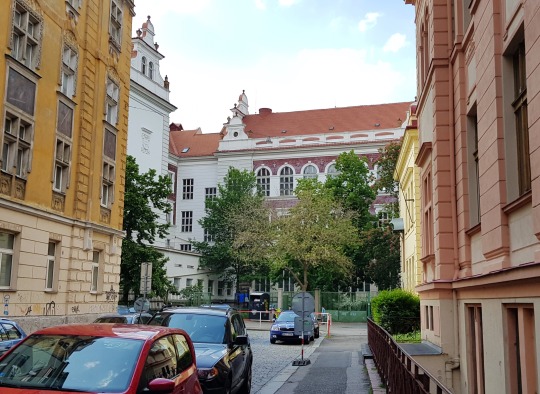
there are countless other interesting restaurants and bistros in the area, though. it was a refreshing area of prague to hang in as it definitely wasn't very touristy, and still offered a vibe similar to a lot of prague 2, in my opinion. the church at strossmayerovo náměstí (called the church of st. anthony of padua) even gave me major týn church vibes (see top photo). who needs old town square when you've got letna/holesovice? really, now?
it is also worth a mention of a little tiny district called malý berlin (little berlin) which caught my eye on a map, so naturally, i had to go there and see just what made it berlinsich. it’s a pretty small area, actually -- about a two by four block area north of and around veletržní street, just west of bubny train station and just north of my favorite prague cafe.
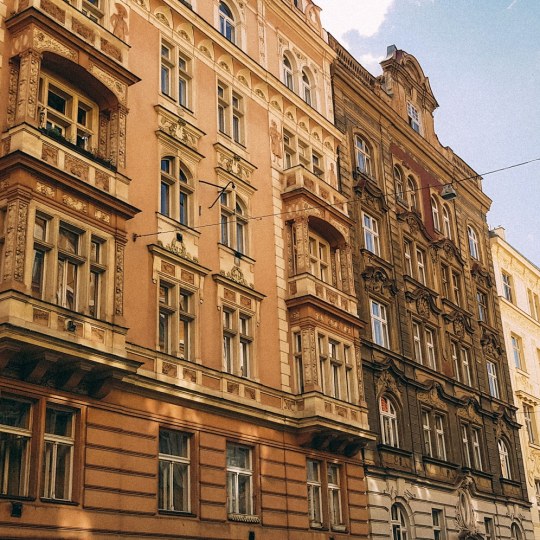
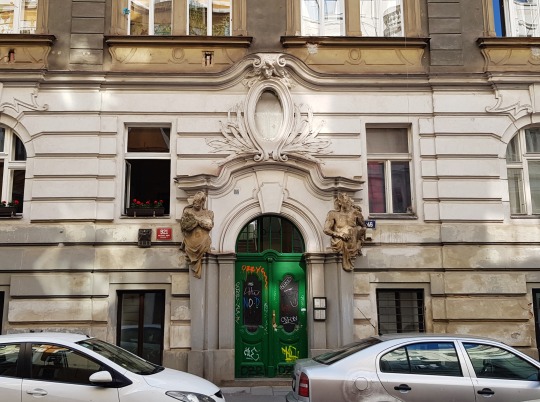
i didn’t feel that it bore any physical resemblance to berlin, but later i’ve come to find out, malý berlin is named so as it was traditionally home to a large german population in the late 19th and early 20th century (before the second world war). there is a pretty interesting page about it from the city of prague (czech language only).
later, i realized we spent almost the whole weekend in holešovice without setting foot across the river. just goes to show you don't need to cross the vltava to have a great time in prague.
happy summer time to you all! i hope you enjoy these lightest days to the fullest - whatever that means for you. i’ll be seeking out all the outdoor time i can (in between the predicted thunderstorms and showers).
ps, you might like a winter holešovice day or cafes i love: kavárna liberál.
0 notes
Text
Win two tickets to watch England v Czech Republic in a private box

Do you fancy watching England vs Czech Republic in style on Friday?
We've teamed up with Grosvenor to give one lucky England fan two VIP tickets to a private box at Wembley stadium.
All you need to do is retweet this tweet and follow @grosvenorsport on Twitter to be included in the prize draw. About 18s only. Draw ends Tuesday March 19.
Good luck!
TERMS AND CONDITIONS FOR FREE PRIZE DRAW
A CHANCE TO WIN 2 TICKETS TO ENGLAND V CZECH REPUBLIC ON 22 MARCH 2019
Conditions of entry
1 . This prize draw (the "Promotion") is only open to UK residents, excluding employees and agents or (a) any company connected to the production or distribution of this Promotion, as well as their relatives or members of their family or household.
2. Entries must be aged 18 years or over at the time of entry. Proof of eligibility must be provided upon request. By entering the Promotion you are deemed to be accepted and bound by these terms and conditions.
3. The Promotion is free to enter and enter can complete all of the following steps:
a) signing in to their Twitter account (if they don't already have a Twitter account, they may create one for free by visiting https://twitter.com/signup); BlondeMake19459005 MariaMake19459004) b) retweeting one of our tweets describing the Promotion from their Twitter account; and
c) following @GrosvenorSport using their Twitter account.
4. Only one entry will be accepted per person.
5. The Promotion will start at 8am on Friday 15th March 2019 and the closing time / date for the Promotion will be 23:59 on Tuesday 19th March 2019.
Winner
6. There will be one winner who will be selected in a random draw by an independent judge from all eligible entries, held on Wednesday 20th March 2019. The winner (s) will be notified by the Promoter by Private Message (“PM”) on Twitter or their selection within one week or this date and will be given details or how to accept their prize. Failure by the winner (s) to accept the prize in the manner specified within one week of the Promoter's PM will make any claim invalid and the Promoter will then select another winner (again selected randomly in a draw) from all remaining eligible entries who will be contacted as above.
7. The prize is two (2) tickets to England v Czech Republic on Friday 22nd March 2019, allowing access to Club Wembley with a pre-match meal and complimentary soft drinks.
8. Gifts, prizes and other promotional items are not transferable, may not be re-sold and are subject to availability. The Promoter reserves the right in their reasonable discretion to substitute any such gift, prize or item with a gift, prize or item or equal value.
9. The name and county of the prize winner will be available after the closing date by submitting a written request to the Promoter.
10. Entrants agree to provide reasonable cooperation to allow the Promoter to use the name and / or the winner for advertising and publicity purposes in connection with this Promotion including but not limited to publication or the winner's name and photograph on the Promoter's websites. In addition, by submitting an entry and taking into consideration the Promoter granting a right to enter the Promotion, entrants agree to grant the Promoter a perpetual, royalty-free, non-exclusive, sub-licensable right and license to use, reproduce, modify , adapt, publish, translate, create derivative works from, distribute and exercise all copyright and publicity rights with respect to any materials contained in the entry (including but not limited to text, images or video materials) worldwide / or to incorporate the Materials into other works in any Media now known or later developed for the full term or any rights that may exist in the Materials. By submitting Materials to the competition, an entrant:
a. warrants that the Materials are its own original work and that it has the right to make them available for all the purposes specified above; that it does not infringe any law; that it is not obscene or dragonfly; and that does not violate the rights of any third party;
b. agrees to indemnify the Promoter against all legal fees, damages and other expenses that may have been incurred as a result of a breach of the above warranty;
c. agrees to waive any moral rights in the Materials for the purposes of its submission to, and publication by, the Promoter and the purposes specified above.
Personal information
11. Any personal information provided to us during the entry process (including but not limited to your name, e-mail address, telephone number and date of birth) must be correct. We accept no responsibility for any incorrect personal information provided to us.
12. We will hold your personal information in accordance with these terms and conditions and our privacy policy (available here: https://ift.tt/1JDWX4P).
13. We will only share your personal information with the Promoter where you are a / the winner of the Promotion or where you have opted in to receive direct marketing from the Promoter (if relevant). The Promoter will hold your personal information as a separate controller in accordance with its privacy policy (available here: https://ift.tt/2Y29U7I).
General
14. The determination and decision of the Promoter on all matters will be final and no promotional correspondence or discussion will be entered into. The Promoter reserves the right in its reasonable discretion: (a) to disqualify any claimant, competitor or nominee whose conduct is contrary to the spirit of the rules or the intention of the promotion and to declare as void any or all of their claims or entries based on such conduct; (b) declare as void any claims or entries resulting from any printing, production and / or distribution errors (including but not limited to any error (s) on any website of the Promoter, any game cards and / or other printed materials) or where there has been error (s) in any aspect of the preparation for or conduct of the promotion materially affecting the result of the promotion or the number of claimants or the value of claims; (c) to add to or to waive any rules on reasonable notice; and / or (d) to cancel the promotion or any part of it at any stage in the event of circumstances beyond the Promoter's reasonable control.
15. No entries will be accepted in bulk, from agents or third parties.
16. Entries that do not follow @GrosvenorSport using their Twitter account will not be eligible and will be disqualified.
17. Multiple entrants are not permitted to share the same email address or Twitter account. Any attempt by any person to obtain more than one entry by using multiple and / or different identities, Twitter accounts, registrations, email addresses, logins, or any other methods will void that person's entries, and that person may be disqualified at the Promoter's discretion
18. The Promotion is also subject to the Promoter's General Terms and Conditions which can be found at https://ift.tt/2T9AwQr.
19. To the fullest extent permitted by law (and subject to paragraph 20 below), the Promoter declares all warranties, representations, covenants and liabilities (whether express or implied) related to this Promotion and / or the prize.
20. Nothing in these terms and conditions shall exclude the Promoter's liability for: (i) death or personal injury as a result of its negligence; (ii) fraud or fraudulent misrepresentation; or (iii) any liability that cannot be limited or excluded by law.
21. The Promoter reserves the right, in its sole discretion, to modify, suspend or cancel the Promotion should virus, bugs, tampering, fraud or other causes beyond the reasonable control of the Promoter corrupt or hinder the administration, security or proper play of the Promotion .
22. If any of the provisions of these terms and conditions are invalid or unenforceable in whole or in part that part shall be severed from the remainder of the provisions and the validity of the other provisions and the remainder of the provision in question shall not be affected.
23. These terms and conditions shall be governed by the laws of England and any dispute shall be subject to the exclusive jurisdiction of the English courts.
Promoter
24. The Promoter is Rank Digital Gaming (Alderney) Limited, c / o Unit 4C, Leisure Island Business Center, Ocean Village, Gibraltar, GX11 1AA
Twitter Notice:
Entry into the Promotion is deemed acceptance of these terms and conditions and the Twitter rules (available at: https://help.twitter.com/en/rules-and-policies/twitter-rules). blonde19459005maze19459004]
Source link
0 notes